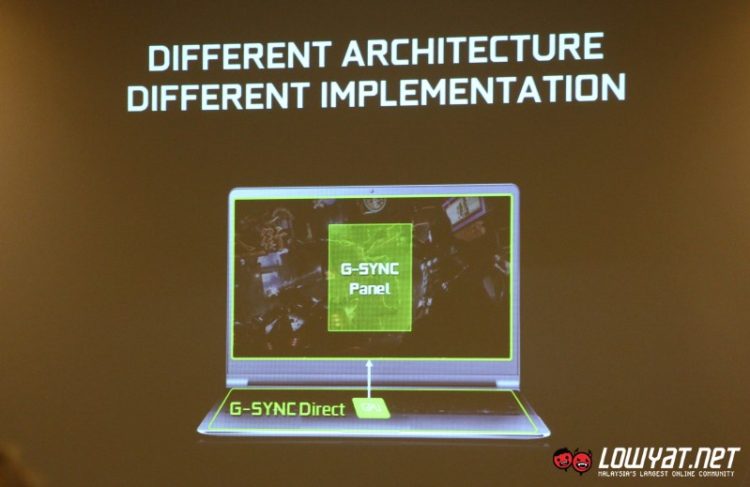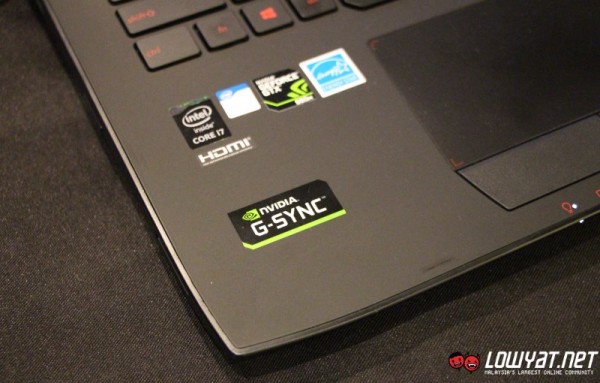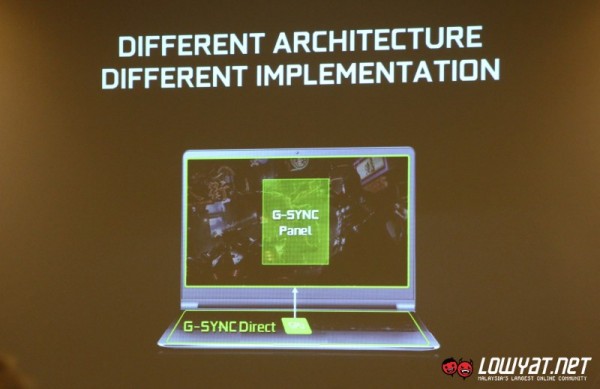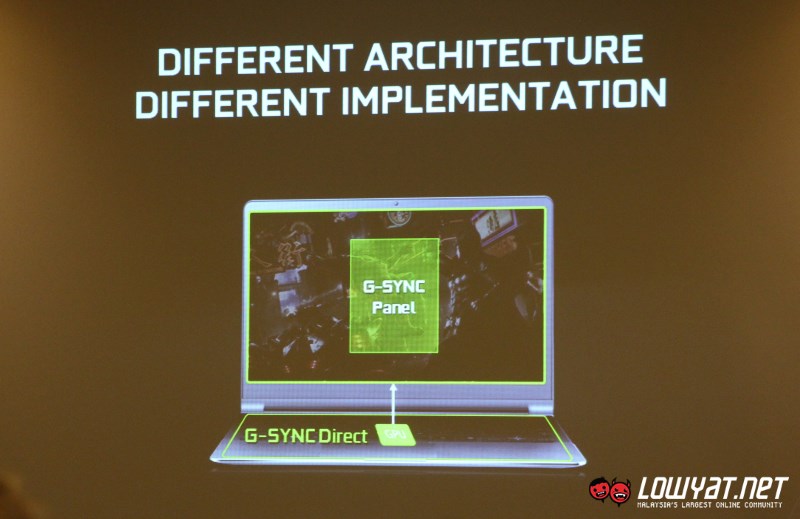Its existence was already known around earlier this year but NVIDIA has finally made it official: its G-Sync technology is now finally available for laptops. Designed to eliminate screen tearing and frame stuttering, the implementation of G-Sync in laptops is actually different from what the company has did for desktop PC.
On desktop PC, the standard pipeline for G-Sync system usually follows this order: graphics card, DisplayPort, G-Sync Module, and G-Sync panel. On laptops, the route is shorter as it only involves the GPU and G-Sync panel which is the reason why G-Sync for laptops is also called G-Sync Direct.
As opposed to desktop PC where users only need to obtain support GeForce graphics card and G-Sync monitors in order to utilize the technology, the G-Sync for laptops is only available on certain models as G-Sync laptops need to be equipped with G-Sync approved display panel by default. For starters, several manufacturers have come out with a number of such laptops just in time for this year’s Computex in Taipei.
Among them is Aorus X7 Pro-Sync and X5 from GIGABYTE, as well as ASUS G751, Clevo P770ZM-G, Clevo P750ZM-G, and MSI GT72 G. While the amount of choices for G-Sync laptops might not be much at the moment, we expect to see more of them around as the technology gets matured over time.












